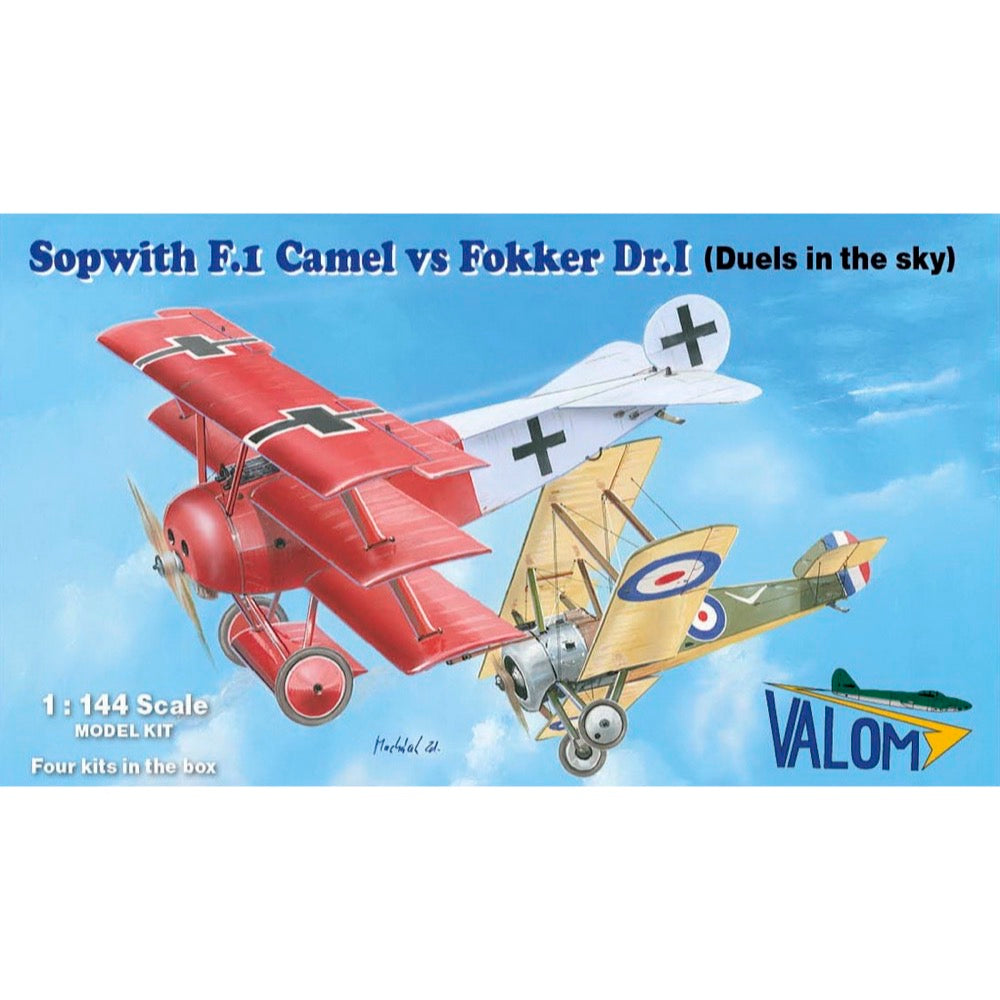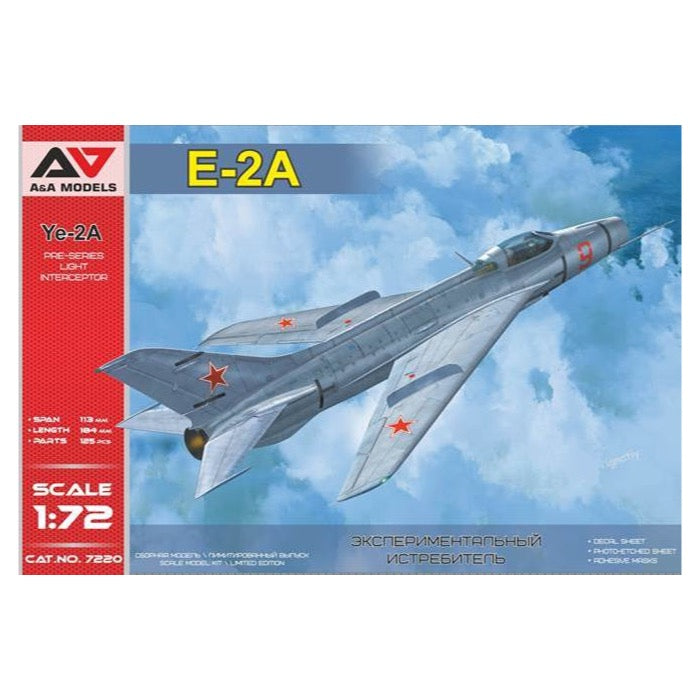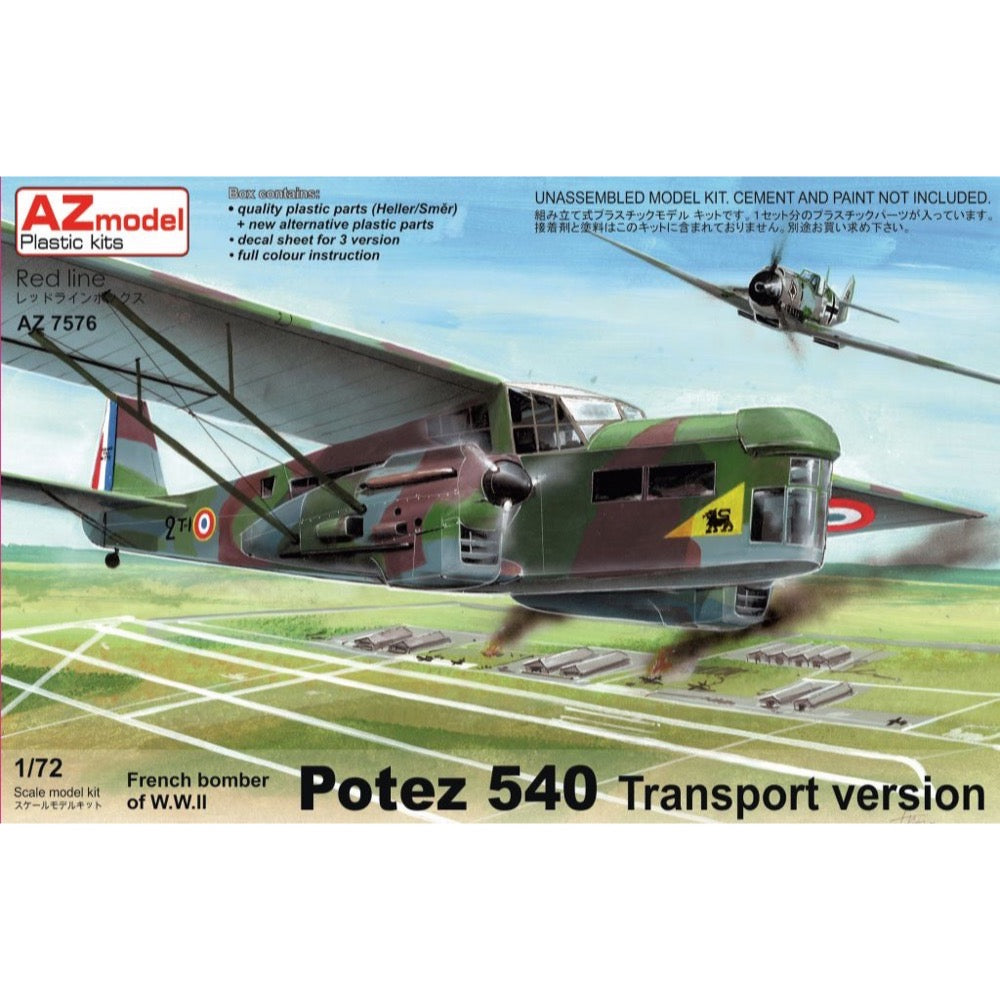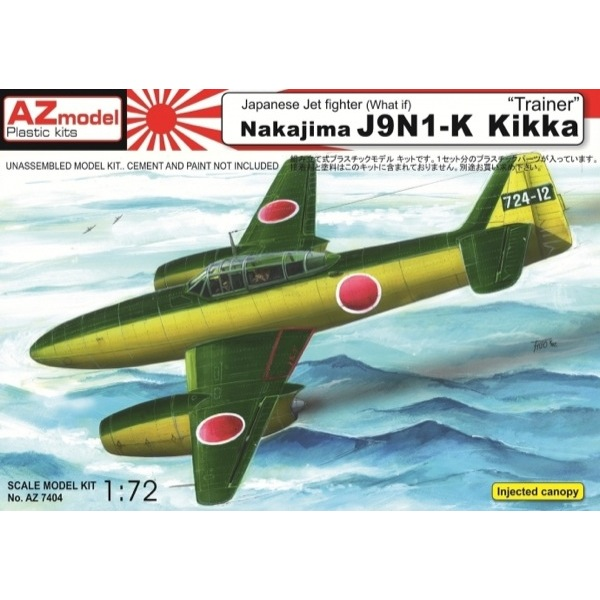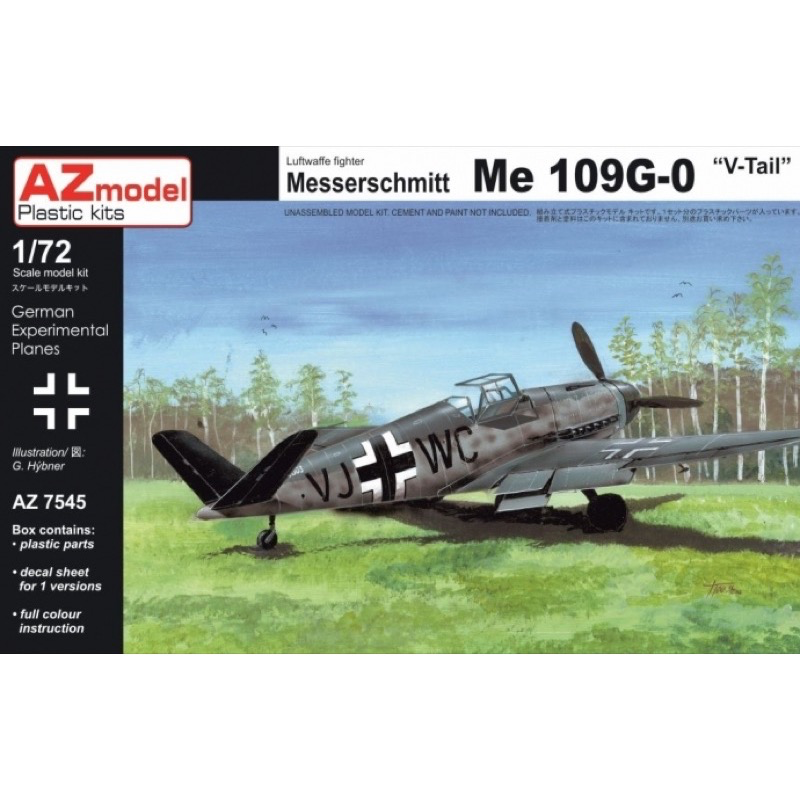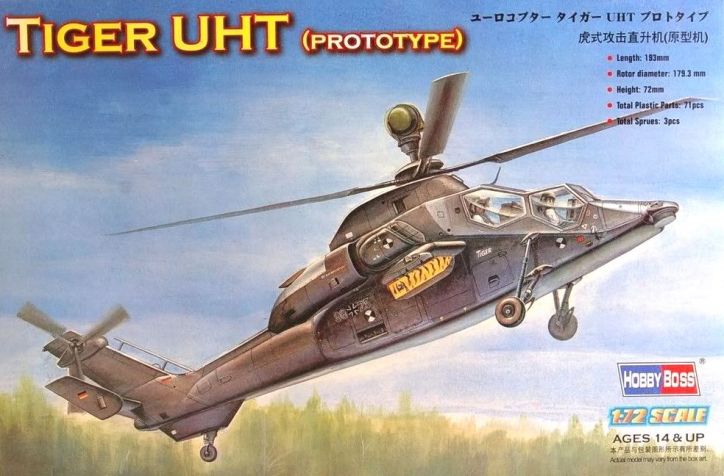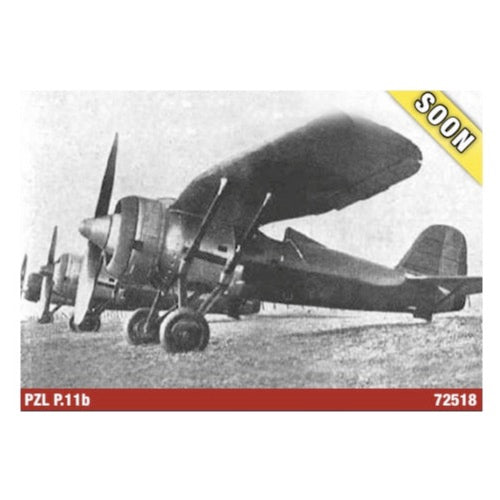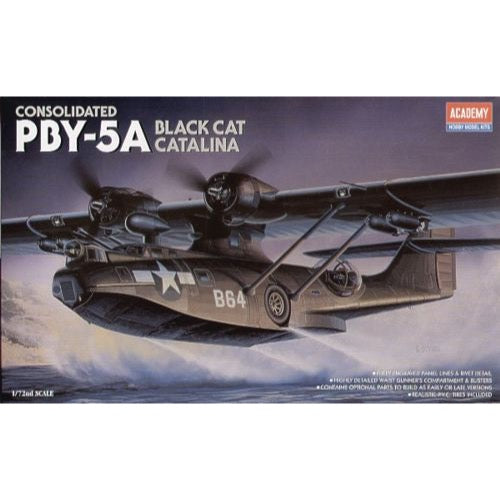
Academy 12487 1/72 PBY-5A Catalina with Australian Decals
18.00
$
<p>In October 1933, the US Navy placed an order with Consolidated and Douglas for prototypes of new machines. The prototype constructed by Consolidated, designated XP3Y-1, became a flying boat built in the largest number of copies. Technical data (PBY-5A version): length: 19.46m, wingspan: 31.7m, height: 6.15m, maximum speed: 314km / h, rate of climb: 5.1m / s, practical ceiling: 4000m, range maximum: 4050 km, armament: fixed - 3 machine guns caliber 7.62 mm and 2 machine guns caliber 12.7 mm, suspended - up to 1814 kg of bombs.</p>
<p>This is an injection-plastic jet aircraft model kit.</p>
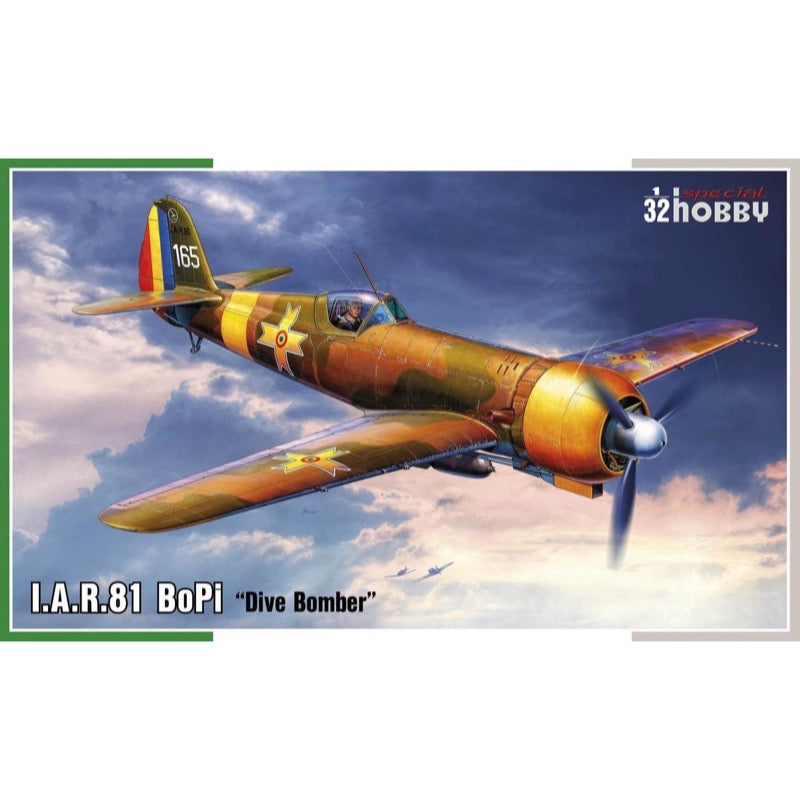
Special Hobby SH32073 1/32 IAR 81 BoPi
46.00
$
<p><strong>IAR-81 BoPi 1/32</strong></p>
<p>In the late 1930s, the Polish PZL P.11 and P.24 all-metal, high wing fighter planes were produced under licence by I.A.R., Industria Aeronautica Romana. As it was quite clear that such type of design was nearing obsolescence and the future belonged to low wing fighters with retractable undercarriage and enclosed canopy, a design team led by Ion Grosu was formed with the aim to project a modern warplane of such sort. Using the P.24´s fuselage structure, a new fighter plane was created and named the I.A.R.80. The first prototype airframe was fitted with the I.A.R. 14K-IIc32 fourteencylinder, double-row radial, delivering 870 hp and was taken aloft for the first time on April 4, 1939. The new fighter had performance approaching that of contemporary foreign designs like the Hurricane, P-36, MS 406 and Bf 109D. Various changes to the plane’s armament led to the I.A.R.80 A, B and C sub-versions being created, and also the I.A.R.81 C which was designed for the fighter-bomber role in the spring of 1941. A specialised dive bomber version, the I.A.R.81 BoPi was also built, fitted with a hinged underbelly bomb rack of design similar to that of the Stuka. When the bomb was released during the dive, the rack swung it outside the propeller arc. Two batches of the BoPi version were built, machines c/n 91-105 and c/n 151-175</p>
<p>The Romania Air Force´s fighter and ground attack units were equipped with the I.A.R.80/81 type right from the beginning of the country´s involvement in the Second World War and until the end of hostilities. Fifty I.A.R.80s were in service during the attack against the Soviet Union on 22 June 1941. The 6th Group (61st and 62nd squadrons) and the 8th Group (41st and 60th Squadrons) were engaged at Stalingrad front during the autumn of 1942. 1 August 1943 saw I.A.R.80 & 81s defending the Ploiesti oil plants from attack by USAAF B-24 Liberators, during ‘Operation Tidal Wave’, when the Rumanian fighters downed some of the heavy bombers. On 10 June 1944, I.A.R.81Cs from 6th Fighter Group confronted P-38 Lightnings belonging to the USAAF 82nd and 1st FG (American pilots mistakenly reported having fought Fw 190As).</p>
<p>Romania joined the Allies on 24 August 1944, and changed back the national insignia worn by its aircraft from crosses to traditional blue, yellow and red roundels. Being under Soviet command, the I.A.R.80/81 units saw combat over Hungary and later also during the liberation of Czechoslovakia over the areas of Moravia and Slovakia, where they enjoyed and suffered their final victories and losses. Remaining airframes of the 80/81 type kept on serving in Romania until the 1950s, some of them also being rebuilt in 1950 to advanced trainer version known as the I.A.R.81DC.</p>
<p>In the box adorned with a bomb-laden I.A.R.81 BoPi airplane, the modeller will find in total seven injection moulded sprues made using steel tools, one clear styrene sprue with canopy parts and other smaller clear items, nicely detailed set of resin parts and a fret of photo etches. The model comes complete with the centre-line rack bomb and underwing bombs and their racks. The decals offer four Romanian options, two of them in a three-tone scheme, the other two in two-tone camouflage.</p>
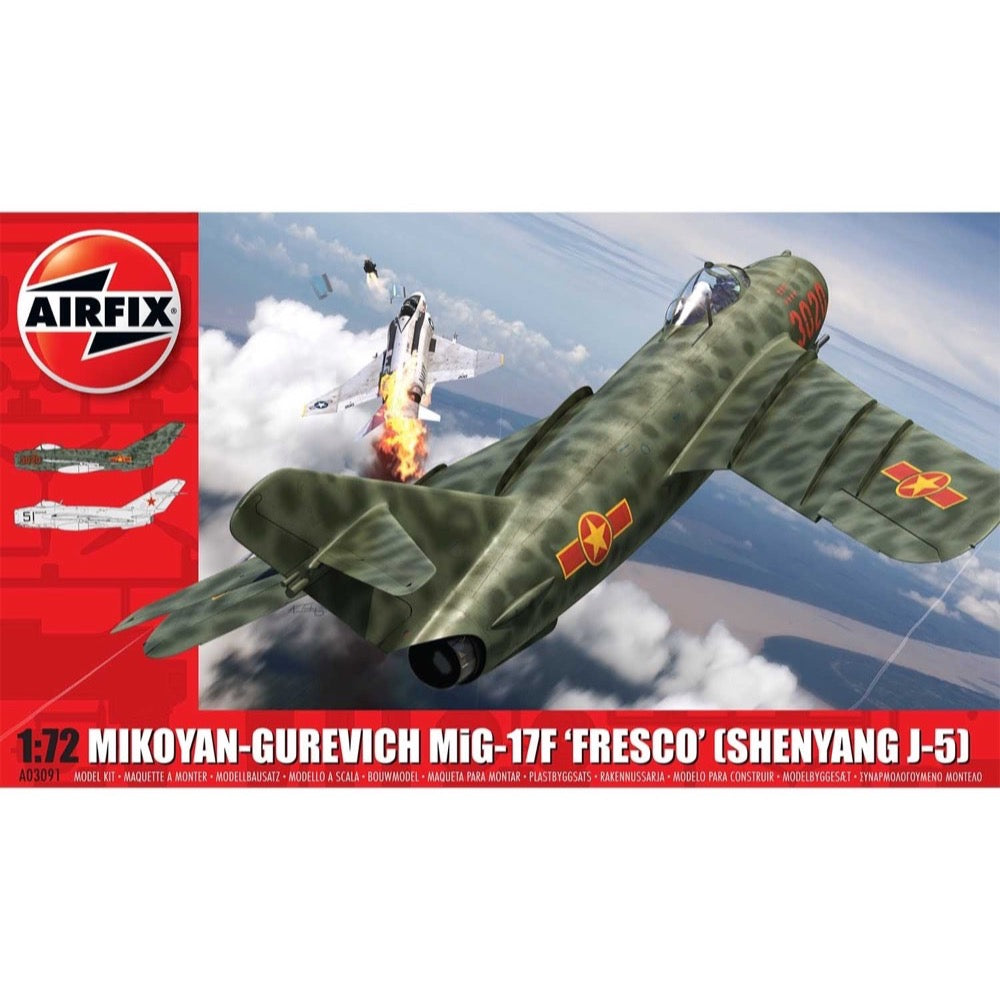
Airfix A03091 1/72 Mikoyan-Gurevich MiG-17F Fresco
15.00
$
<p>The end of the Second World War saw victorious Allied nations desperately attempting to secure details of German jet technology and high speed research data which could be applied to their own jet projects. Using this information and engine technology obtained from Britain, the Soviet Union introduced the diminutive Mikoyan-Gurevich MiG-15 in 1949 one of the most capable of the early jet fighters. Even as this aircraft was proving effective during the Korean War, the Soviets were already working on its successor. </p>
<p>The larger and faster Mig-17 Fresco may have looked like a larger incarnation of its predecessor, yet this was in fact a completely redesigned aircraft, incorporating many improvements over the MiG-15 and a significant upgrade in Soviet jet capability. The MiG-17 was designed to perform the role of bomber killer and was never intended as a dogfighter. However, its exceptional agility would allow this aircraft to score combat victories over much heavier and more modern American designs. The Vietnam War proved to be something of a sobering experience for the US Air Force, as some of their most modern aircraft would fall victim to the guns of the MiG-17. Lighter and much more manoeuvrable than the US aircraft, the subsonic MiG-17 would claim victories over such aircraft as the F-105 Thunderchief and McDonnell Douglas Phantom, resulting in the US developing new agile air superiority fighters.</p>
<p>Possessing excellent performance, being cost-effective and easy to maintain, the rugged MiG-17 was produced in large numbers and became the standard Warsaw Pact fighter from the mid 1950s and for the next decade, with aircraft produced under licence in both China and Poland. It was an attractive fighter option for many of the worlds smaller air forces and more than thirty overseas nations would eventually operate the type. Perversely, for a nation against which the MiG-17 was designed to combat, America would become home to significant numbers of these aircraft, most coming into the hands of private collectors but a small number used in dissimilar aircraft trials and to perfect combat techniques against smaller, more agile jet fighters. Two beautifully restored examples have also been popular display performers on the US Airshow circuit over the years.</p>
<p>While the Mig-17 may look like any other military plane, its power and fighting ability more than makes up for it and now, you can bring this home today for your Airfix model range! With two choices of livery schemes, a 134mm wingspan, sprues and decals, the mighty Mig-17 has definitely earned a spot in your military collection. </p>
<h4>Includes</h4>
<ul>
<li>Sprues</li>
<li>Decals</li>
</ul>
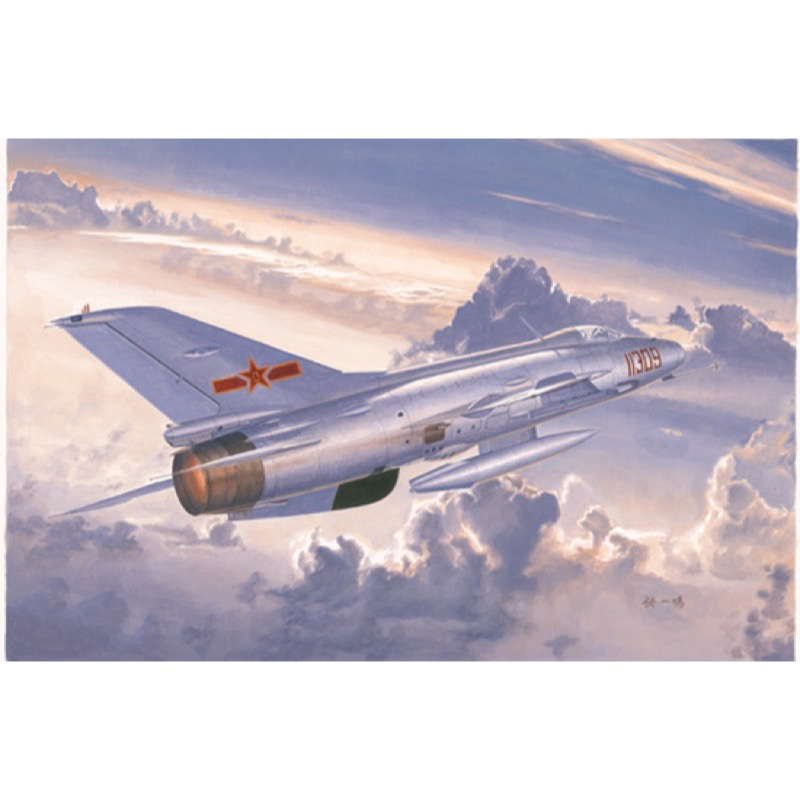
Trumpeter 02860 1/48 CHN J-7B Mig-21*
24.00
$
<p>Chinese fighter J--7B is based on the original F--7A type developed from its first flight on December 30, 1978.The biggest change is that the new turbojet engines and a new generation using -7B ejection escape system. -7B Turbojet engine has more thrust than a conventional engine and its 200-hour service interval makes it more reliable than a conventional engine. The new ejection seat in 1984 started, and soon in the second year of the successful completion of five ejection.</p><p></p>
<br>
<p>In addition, other improvements include repositioning the parachute compartment, designed the new canopy and windshield on the belly and inside a new tank.</p><p></p>


